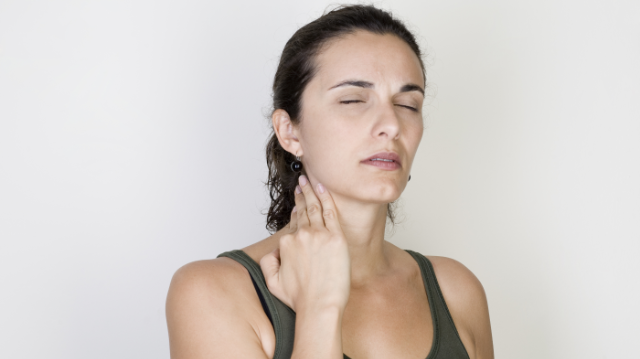Understanding Your Neck Pain Can Help You Get The Care You Need

Most of us can recall one or more occasions when the day got off to a rough start because of a stiff neck. This can be explained by the fact that neck pain ranks among the most common types of pain you can get. Statistics vary on just how many people encounter neck pain, but recent evidence suggests that its lifetime prevalence is between 20–70% and that 10–20% of individuals are affected by it at any given time.
Dealing with neck pain can be troublesome and place a strain on everyday life. Typical movements like bending over to pick an item off the ground or twisting your torso when looking to the side might suddenly take more time and make you less mobile in the process. Being regularly bothered by pain and movement limitations will often lead one to wonder what’s causing the pain and what steps can be taken to address it.
The truth is that the specific cause of neck pain is usually difficult to pinpoint, and regardless of its cause, the most effective treatment is usually a comprehensive, individualized course of physical therapy. Nonetheless, there are a few signs that could be a “red flag” that warrants further investigation. To help you better understand what could be causing your neck pain and what to do next, here are the 7 most common causes of neck pain seen by physical therapists and some red flags to be aware of:
The 7 most common neck pain conditions treated by physical therapists
- Sprain: occurs when a ligament in the spine is pushed beyond its limits, which can damage or tear it; typically leads to pain, discomfort, reduced range of motion, and possibly muscle cramping or spasms
- Strain: involves a tendon or muscle that supports the spine being twisted, pulled, or torn; as with sprains, neck strains usually lead to pain, discomfort, reduced range of motion, and possibly muscle cramping or spasms
- Sprains and strains are responsible for most cases of neck pain, particularly in younger patients; these injuries can occur either from a single incident or result from repetitive stress over time
- Herniated disc: a condition in which the softer jelly–like substance of a disc in the spine pushes out through a crack in the tough exterior ring; a “bulging disc” means that the inner layer has protruded outwards, but the outer layer remains intact; herniated discs are more common in the lower back, but also occur in the neck; typical symptoms include a sharp or burning pain in the shoulder or arm, as well as numbness or tingling and weakness
- Spinal stenosis: a condition in which the spinal canal—the space around the spinal cord filled with a fluid that bathes the nerves and nerve roots of the spine—narrows over time, which puts pressure on the spinal cord and spinal nerve roots; spinal stenosis is typically only seen in older adults
- Degenerative disc disease: an age–related disorder in which one or more of the intervertebral discs deteriorates or breaks down, which can lead to a herniated disc or other related issues; degenerative disc disease is another one of the most common causes of neck pain
- Osteoarthritis: involves the breakdown of protective cartilage that surrounds the ends of joints and discs in the spine; patients typically experience pain and stiffness, and possibly weakness or numbness in the neck as well
- Cervical radiculopathy: occurs when one of the nerve roots in the neck is compressed or pinched when it branches away from the spinal cord, which is caused by any condition that injures or irritates these nerves; symptoms include a burning pain that starts in the neck and travels down the arm, chest, upper back, and/or shoulders, and weakness, numbness, and/or tingling in the fingers


